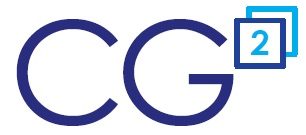If you’re a small or medium size CG manufacturer, you are probably use Excel to manage your trade promotions. If you are evaluating TPM software solutions, some of your team members are going to push-back and make the case for keeping their spreadsheets. Some of the arguments you might hear include:
- Why should we invest so much time and effort to learn and use a TPM solution vs. our existing spreadsheets?
- Our people need to be selling, not spending their time looking at computer screens in a TPM solution. They already spend too much time on the computer vs. selling.
- The TPM solution takes more mouse clicks than our spreadsheet. We thought this was going to save us time, but it’s more work!
- Our sales people already are overworked. This is going to be more work for them.
It’s interesting that these and other challenges still prevent some manufacturers from upgrading to a true closed-loop TPM solution. If you’ve worked at several companies throughout your career, chances are good that you’ve used a TPM solution and know the benefits can be huge.
So why do we hear such passionate challenges to keep the problematic Excel spreadsheet? Like many things in life, there are valid concerns behind the complaints:
- Excel is familiar, and users have learned to adapt and work-around it’s short-comings. Any new TPM solution is unknown, and represents change. Change of any kind can be uncomfortable.
- Many of the TPM benefits aren’t apparent and don’t materialize until long after the solution is implemented:
- The overall promotional workflow in a TPM solution becomes more proactive and less reactive than in Excel. More of the promotion planning effort is done up-front. The big time and efficiency savings in the settlement and deduction resolution process is realized at the end of the promotion life-cycle. Moving effort from the end of the life-cycle to the beginning means users won’t see these efficiencies until after promotions have gone through their entire life cycle. All they see is the guaranteed extra work upfront, and the unproven promise of less work on deductions months ahead in the future.
- After the first budget period is completed, users can copy promotions to the next budget period. The copy-promotion feature provides huge time and efficiency savings, but not when the TPM solution first goes into live production. Users will not gain these benefits until the next full planning period.
- When a TPM solution goes into live production, the typical planner has extra work right up-front to create all their promotions from scratch, with a promise 6 to 12 months in the future for some time savings. Sometimes they have to create promotions in the TPM solution that they've already created in Excel and other portals. This is double data entry for planners.
- The promotion planner’s workload also goes up when a new TPM solution is implemented because planners are still working on deductions, updating their spreadsheets, working on post-audits and other issues for promotions planned in Excel that are still active. Concurrent to this, the planner takes on more workload to to build promotions in a completely new TPM tool from scratch. That’s twice the work. Panic!
- Users are often required to sit through training videos and or classes to learn their new TPM software tool. This extra investment of time is on top of the all the extra work described above. Take that feeling of panic, and now add training on top. Tripple panic!
- Not all the benefits of a TPM solution go back to the promotion planners. Unfortunately, some of the extra time that promotion planners invest upfront benefits stakeholders in other departments. While this is good for the overall company, it explains why some departments pushback more than others.
For those of you struggling with these and other challenges to implementing a trade promotion management software solution, it is important to keep in mind these high-level benefits to the company by team:
- TPM tells finance how much your promotions will cost and make sure enough money is set aside to pay for them. It also tells the finance team when and how your promotions will hit the company’s P&L.
- TPM tells demand planning how extra product your promotion will sell, so your company knows how much to manufacture, and which DC to store it.
- TPM enables planners to track results of each promotion, from start to finish. Save time planning promotions by copying this year’s deals to next year as a starting point. Time savings may not be realized for 6 to 12 months after go-live.
- Provides brokers visibility and appropriate access to the promotion workflow.
- TPM gives your A/P and A/R staff information to help resolve deductions taken by your customers, and help prevent double-dipping.
- TPM provides your marketing research team the data they need for post-promotion analysis, to help identify ways to improve promotion effectiveness and efficiency.
- TPM helps your company defend against future post-audits.
- TPM solutions frees your IT staff from the challenges of extracting data from spreadsheets, cleaning it and making it acceptable data for your ERP.
- TPM solutions are directly integrated to your ERP
- TPM solutions automatically track all shipments, settlements and deductions.
- Provides visibility to all stakeholders
- Enforces business rules and workflow
Next time you hear a stakeholder push-back on implementing a TPM solution, listen and take note. There are often valid concerns behind the challenge. Be sure your stakeholders are aware that TPM solutions can require extra effort in the first year, and that some of the time savings and benefits to the company and to individual stakeholders are not realized for 6 to 12 months after go-live.
Alex Ring, President
CG Squared, Inc.
